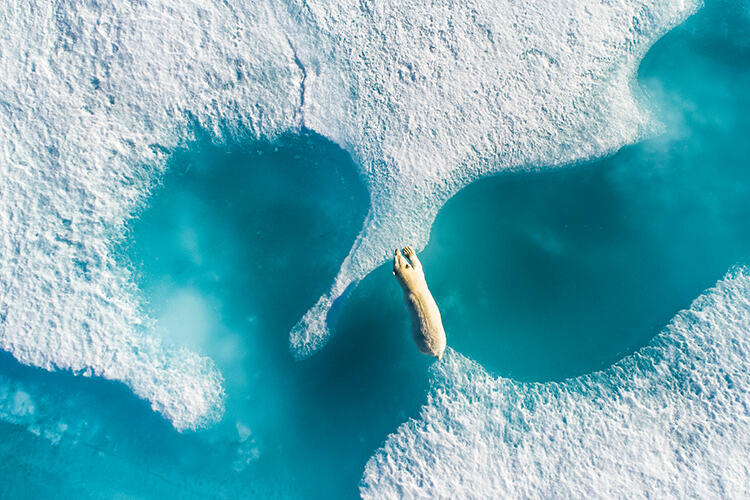
Florian Ledoux uses drones to create spectacular images and footage of Arctic landscapes and polar bears
To create these images, Florian and his team travel to the Arctic for weeks at a time, living in specially designed ‘pods’. It’s a way of working that allows the photographer to fully immerse himself in the landscape and the home of the bears. He then uses drones equipped with cameras with powerful zoom lenses to document behaviours sometimes never seen before.

Florian is well aware that polar bears are a symbol of climate change, but he finds hope in their resilience and adaptability. When a place is protected, he says, bears can adapt to new conditions. It wasn’t thought possible for bears to hunt reindeer, but he has seen them do it – and captured it on film. ‘The positive message of my work is to believe that there is hope. Because if we can reconnect ourself to nature we can protect it. When you love something, you protect it, you don’t destroy it.’








